Erosion Control Plants
Erosion control plants naturally stabilize soil, reduce runoff, promote environmental sustainability, and improve infiltration through deep and extensive root systems.
Soil erosion, the displacement of topsoil by water, wind, or human activity, poses a significant threat to environmental and agricultural sustainability. The use of plants for erosion control, also known as bioengineering, is a sustainable approach that leverages the natural properties of plants to stabilize soil and manage landscapes.
Erosion control plants present an eco-friendly alternative to artificial erosion control methods, enhancing biodiversity and beautifying landscapes.
This guide explores the best plants for erosion control, highlighting their mechanisms, the scientific basis of their effectiveness, benefits, and how to implement them effectively in various settings.
Learn about species like Vetiver, Willow, and Live Oak, and how their unique characteristics make them ideal for erosion control and protecting landscapes.
Mechanisms of Erosion Control by Plants:
Plants control erosion through several mechanisms:
- Root System Architecture: The depth and spread of roots enhance soil cohesion and increase shear strength, reducing the soil’s susceptibility to erosion.
- Canopy Cover: Plant canopies intercept raindrops, reducing the impact on the soil surface and thereby decreasing the rate of soil detachment.
- Ground Cover: Dense ground cover minimizes soil exposure to erosive forces, while dead plant material adds organic matter that improves soil structure and water retention.
Key Plant Species for Erosion Control:
Grasses:
Grasses are one of the most commonly used plant types for erosion control due to their fast growth rate, extensive root systems, and ability to establish quickly on various soil types.
They form a dense mat that covers the soil surface, which protects the soil from the impact of raindrops and reduces surface runoff.
The root systems of grasses bind soil particles together, increasing the soil’s resistance to erosion. Their above-ground structures also slow down water flow, which minimizes soil displacement.
Grasses such as vetiver (Vetiveria zizanioides), rye grass (Lolium spp.), and fescue (Festuca spp.) are notable for their rapid establishment, which makes them ideal for critical areas needing immediate coverage.
Pros:
- Quick establishment reduces the time the soil is exposed to erosive forces.
- Cost-effective and easy to maintain.
- Suitable for a wide range of environmental conditions.
Cons:
- May require reseeding or replanting to maintain effectiveness, especially in harsh conditions.
- Less effective on very steep slopes or in areas with heavy water flow compared to deeper-rooted shrubs and trees.
Vetiver (Vetiveria zizanioides)
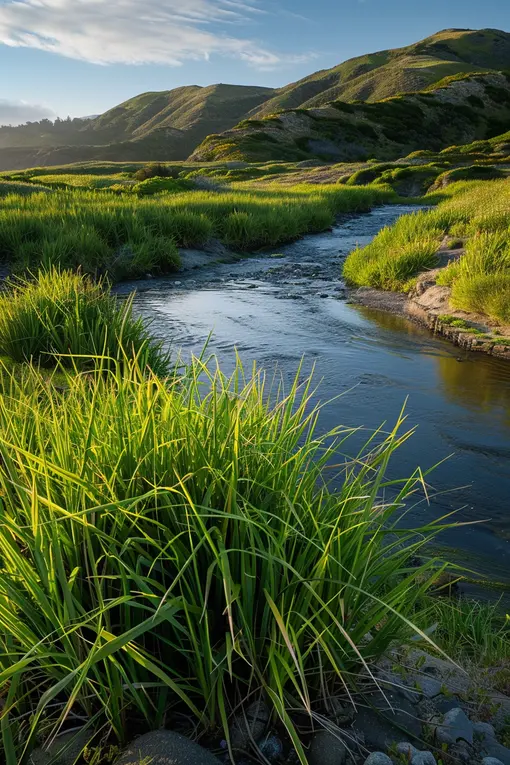
Vetiver (Vetiveria zizanioides), also known as Chrysopogon zizanioides, is a perennial grass that is highly regarded for its erosion control capabilities. It originates from India but is now used globally for its environmental benefits, particularly in tropical and subtropical regions.
Known for its deep, dense root system, vetiver is highly effective in stabilizing steep slopes and streambanks. The roots can penetrate several meters into the soil, providing exceptional soil binding and increasing soil shear strength.
1. Exceptional Root System: Vetiver’s most notable feature is its deep and dense root system, which can grow up to 3 meters (about 10 feet) deep. This root system binds the soil effectively, making it an excellent tool for stabilizing slopes and preventing soil erosion. The roots grow vertically, which is more effective for anchoring soil than the horizontal spread seen in many other grasses.
2. High Tolerance to Extremes: Vetiver is extraordinarily tolerant of extreme weather conditions, including high temperatures, flooding, and drought. It can also thrive in a wide range of soil types, including highly erodible soils, soils with high acidity, and even contaminated soils. This makes it a versatile option for erosion control in various environmental settings.
3. Longevity and Sustainability: Once established, vetiver grass is very long-lived and requires minimal upkeep. It does not need replanting, as it is not invasive and its clumping growth pattern keeps it confined to the planted area. Its sustainability and low maintenance make it an eco-friendly choice for long-term erosion control projects.
4. Protection Against Water and Wind Erosion: The density and depth of vetiver’s root system, combined with its thick growth, reduce runoff velocity and increase water infiltration, which significantly reduces water erosion. Its robust nature also helps in protecting against wind erosion, particularly in open and vulnerable areas.
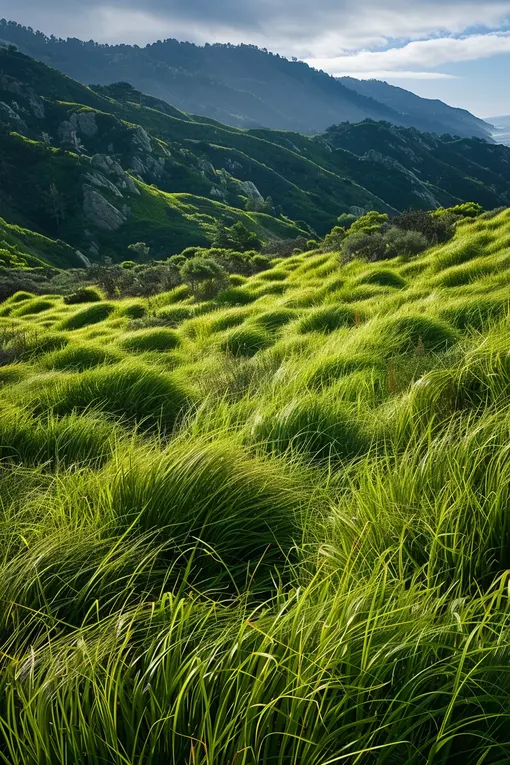
Fescue (Festuca spp.)

Drought and shade tolerant as well as quick to establish, fescue grass, comprises several species commonly used in erosion control and lawn applications. Among the most popular are Tall Fescue (Festuca arundinacea) and Fine Fescue (Festuca spp.), favored for their adaptability, resilience, and minimal maintenance requirements.
1. Root System: Fescue grasses are known for their extensive and deep root systems. This root architecture enhances soil structure by binding soil particles together, which significantly increases the soil’s resistance to erosion. The roots penetrate deeply into the soil, which not only stabilizes the surface but also helps to anchor the subsurface, reducing the risk of soil displacement due to water runoff and wind.
2. Quick Establishment: Fescue grasses can establish quickly compared to many other types of vegetation. This rapid growth is crucial in erosion control scenarios where covering bare soil promptly is necessary to prevent erosion. Once sown, fescue can germinate and grow to form a protective cover over the soil in a relatively short time, which is vital for controlling erosion, especially in critical areas prone to rapid degradation.
3. Drought and Shade Tolerance: Fescue grasses are highly adaptable to a variety of climatic conditions. They are particularly noted for their drought tolerance, thanks to their deep root system, which can access moisture from deeper soil layers. Additionally, fescue grasses perform well in shady conditions where other grasses might struggle. This shade tolerance makes them an excellent choice for erosion control under tree canopies or on north-facing slopes where sunlight may be limited.
4. Low Maintenance: Once established, fescue grasses require relatively low maintenance. They are less demanding regarding watering, fertilizing, and mowing compared to other grass species. This low maintenance requirement not only reduces the cost and labor involved in upkeep but also makes fescue an environmentally friendly option, minimizing the need for chemical inputs and frequent mechanical soil disturbance.
5. Year-Round Protection: Many fescue species are perennial, offering year-round ground cover. This continuous protection is crucial for erosion control, as it ensures that the soil is not exposed at any time of the year, particularly during seasonal transitions and extreme weather events.
Rye Grass (Lolium spp.)
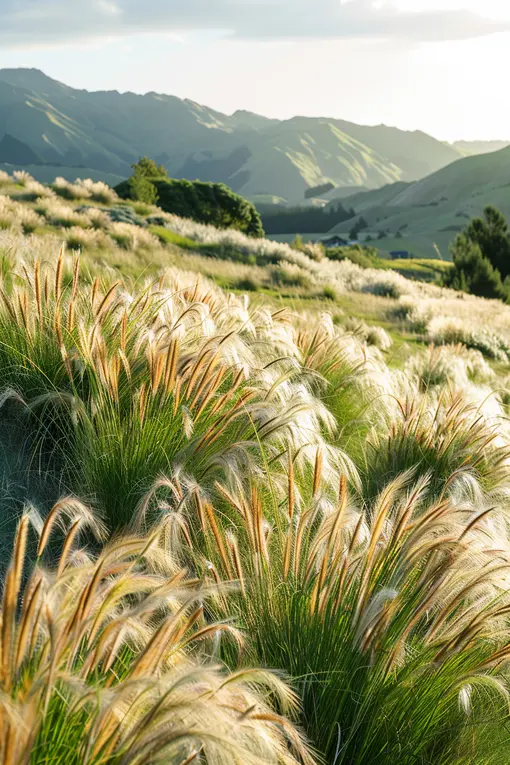
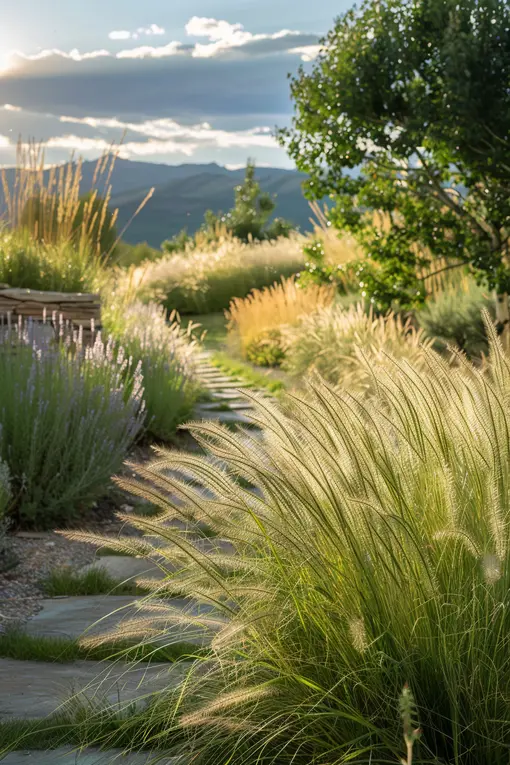
Rye Grass (Lolium spp.), particularly annual rye grass (Lolium multiflorum) and perennial rye grass (Lolium perenne), is widely used for erosion control, especially in temperate regions. It is valued for its fast growth and adaptability.
1. Rapid Establishment: Rye grass germinates and grows very quickly, providing almost immediate soil coverage. This rapid growth is crucial for preventing soil erosion, especially in temporary or emergencies where quick stabilization is needed, such as on construction sites or after land clearing.
2. Soil Binding: The root system of rye grass, although not as deep as vetiver’s, is effective in binding the upper soil layers. This reduces topsoil loss due to water runoff and wind, which are common on bare or disturbed lands.
3. Versatility: Rye grass adapts well to different soil types and climatic conditions. It can be used in a variety of settings, from agricultural lands to urban areas, making it a flexible option for erosion control.
4. Winter Cover: In temperate regions, rye grass is often used as a winter cover crop in agriculture. It protects the soil from erosion during the rainy season and adds organic matter to the soil when it is tilled under in the spring.
Trees:
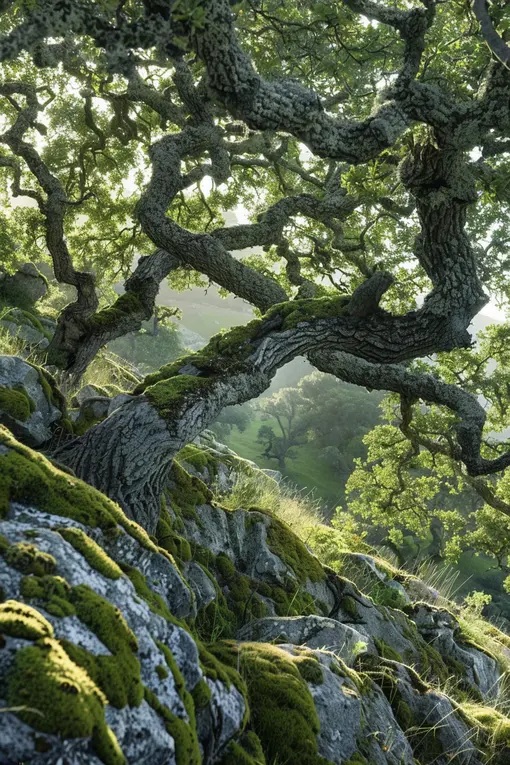
Used in erosion control for their extensive root systems and large canopies, trees protect the soil by intercepting rainwater and reducing the velocity of falling raindrops before they hit the ground. They are particularly effective in large-scale erosion control projects and areas requiring long-term solutions.
Trees such as Live Oak (Quercus virginiana) and Bald Cypress (Taxodium distichum) have deep and wide-reaching roots that provide significant soil stabilization and can control erosion in both upland and wetland environments. Their canopies reduce the impact of rain on the soil, decreasing surface runoff and promoting water infiltration.
Pros:
- Long-term erosion control with significant improvements in soil structure.
- Provide habitat and support biodiversity, contributing to ecological health.
- Can handle extreme weather conditions better than grasses and shrubs.
Cons:
- Require a long time to mature and become effective as erosion control.
- Higher initial costs and more intensive initial care.
- Not suitable for all areas, particularly those needing immediate erosion control or those with limited space.
Live Oak (Quercus virginiana)

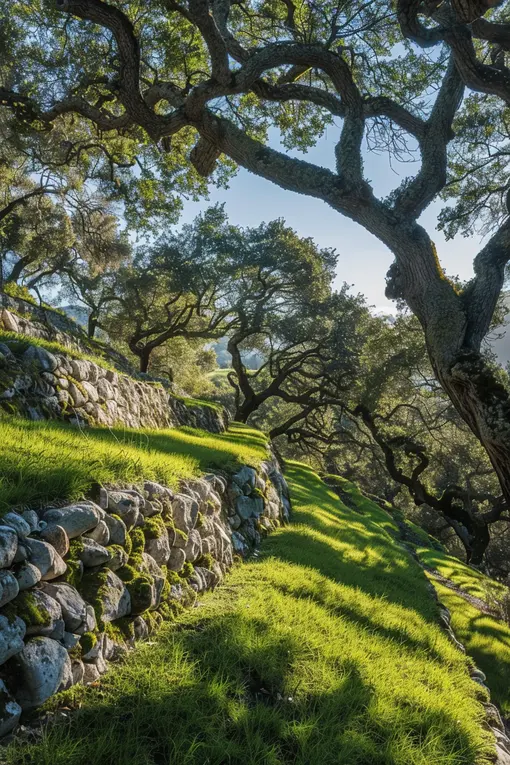
Live Oak (Quercus virginiana) is a robust and long-lived tree native to the southeastern United States. It is prized not only for its majestic appearance and shade but also for its strong environmental benefits, particularly in erosion control.
1. Extensive Root System: Live Oak has a broad and deep root system that firmly anchors it to the ground, making it highly effective at stabilizing soil. These roots enhance the structural integrity of the soil, significantly reducing erosion rates, particularly in areas susceptible to heavy rains or strong winds.
2. Large Canopy: The expansive canopy of the Live Oak spreads widely, intercepting rainfall and reducing the impact of raindrops on the soil. This canopy cover helps minimize surface runoff and allows more water to percolate into the soil rather than washing soil away.
3. Longevity and Durability: Live Oaks are extremely durable and can live for centuries. Their longevity ensures that they provide continuous soil stabilization and erosion control over an extended period, making them an excellent investment for long-term erosion control projects.
4. Wind Resistance: Due to their sturdy structure and strong root system, Live Oaks are notably resistant to wind. This characteristic is particularly beneficial in coastal areas where wind-driven erosion can be a significant problem.
Bald Cypress (Taxodium distichum)

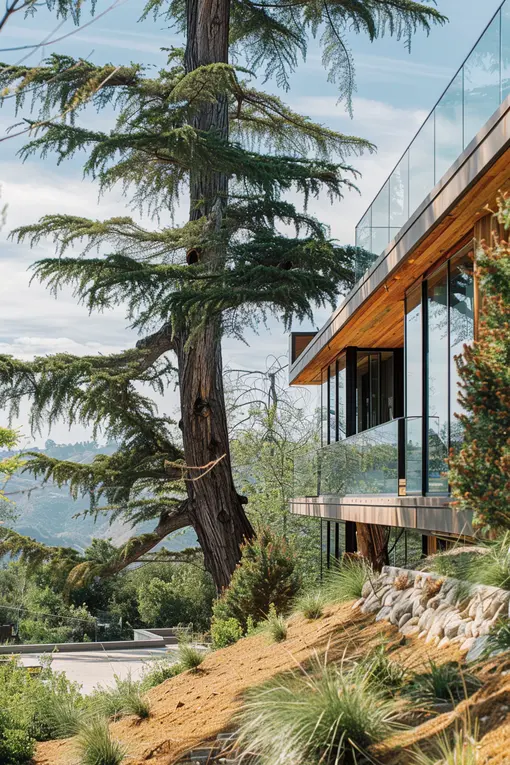
Bald Cypress (Taxodium distichum) is a deciduous conifer native to the southeastern United States, commonly found in wet, swampy areas. It is well-known for its distinctive “knees,” woody projections that emerge from the roots, thought to help in oxygen exchange and possibly stability and sediment accumulation.
1. Water Tolerance and Root System: Bald Cypress thrives in wet environments, making it ideal for erosion control in riparian zones and floodplains. Its root system is adapted to aquatic environments, helping to stabilize soil and control erosion along waterways.
2. Sediment Capture and Accumulation: The structure of Bald Cypress, particularly its knees and dense root mat, helps capture and hold sediment, reducing sediment transport in water bodies and stabilizing the soil. This characteristic is crucial for maintaining the integrity of riverbanks and other aquatic ecosystems.
3. Growth in Flooded Conditions: Unlike many tree species, Bald Cypress can grow in flooded conditions, which allows it to be effective in areas that are prone to seasonal flooding. By establishing itself in these zones, it can prevent erosion that typically occurs due to fluctuating water levels.
4. Ecological Benefits: Bald Cypress provides significant ecological benefits, including habitat for wildlife and improvement of water quality by filtering pollutants and improving the clarity and quality of the surrounding water.
Shrubs:
Shrubs are used for erosion control on slopes and in areas where more substantial vegetation is needed to stabilize the soil. They generally have deeper root systems than grasses, providing better soil cohesion and are effective in controlling both wind and water erosion.
Shrubs such as Creeping Juniper (Juniperus horizontalis) and Willow (Salix spp.) have extensive root systems that effectively bind the soil and anchor it against erosive forces. They are particularly useful in stabilizing streambanks and slopes where deeper roots are crucial for long-term stability.
Pros:
- Provide more substantial ground coverage and greater biomass, which enhances soil structure and organic matter.
- Longer lifespan and less maintenance once established.
- Effective in protecting against both water and wind erosion.
Cons:
- Slower to establish compared to grasses, requiring more time and care during the initial growth phases.
- Generally more expensive to plant due to larger plant size and slower propagation rates.
Willow (Salix spp.)
Willow (Salix spp.) encompasses a variety of species known for their rapid growth and flexibility. Commonly found near water sources in temperate climates, willows are extensively used in erosion control, particularly in riparian restoration projects.
1. Fast Growth and Rapid Establishment: Willows are characterized by their fast growth rate, which allows them to quickly establish and stabilize soil. This rapid growth is crucial for areas needing immediate erosion control, such as riverbanks and lakeshores, where exposed soil is at high risk of erosion.
2. Extensive Root System: The root systems of willow shrubs are extensive and fibrous, spreading widely to firmly anchor the soil and reduce erosion. These roots not only hold the soil together but also help in the filtration of water, trapping sediments and reducing the load of pollutants in waterways.
3. Flexibility in Wet Environments: Willows thrive in moist and wet conditions, making them particularly effective in areas prone to flooding or with high water tables. Their ability to grow in such conditions enables them to stabilize soil in environments where other plants might not survive.
4. Habitat Creation: Beyond erosion control, willows provide valuable habitats and food sources for a variety of wildlife, enhancing the biodiversity of the areas where they are planted.
Creeping Juniper (Juniperus horizontalis):
Creeping Juniper (Juniperus horizontalis) is a low-growing evergreen shrub commonly used in landscape design and erosion control. It is particularly valued for its ability to spread across the ground, forming a dense mat that covers and protects the soil.
1. Ground Coverage: Creeping Juniper forms a dense, low mat that covers the soil surface, significantly reducing the impact of raindrops on the soil and thus minimizing erosion. This dense coverage also reduces water runoff and wind erosion, particularly effective on slopes and exposed areas.
2. Drought Tolerance: This shrub is highly tolerant of dry conditions, making it suitable for arid and semi-arid regions where water conservation is crucial. Once established, Creeping Juniper requires little water, maintaining its protective cover without needing frequent irrigation.
3. Cold and Salt Tolerance: Creeping Juniper performs well in cold climates and can tolerate salty conditions, which makes it an excellent choice for coastal erosion control where salt spray from the sea can inhibit other plants.
4. Low Maintenance: Due to its hardy nature, Creeping Juniper requires minimal maintenance once established. It does not need regular pruning or watering, making it an economical and low-effort option for long-term erosion control.
Application and Maintenance
The successful application of erosion control plants requires consideration of local soil conditions, climate, and intended land use. Regular maintenance, such as pruning and controlled grazing, can enhance the efficacy and longevity of vegetation as an erosion control measure.
